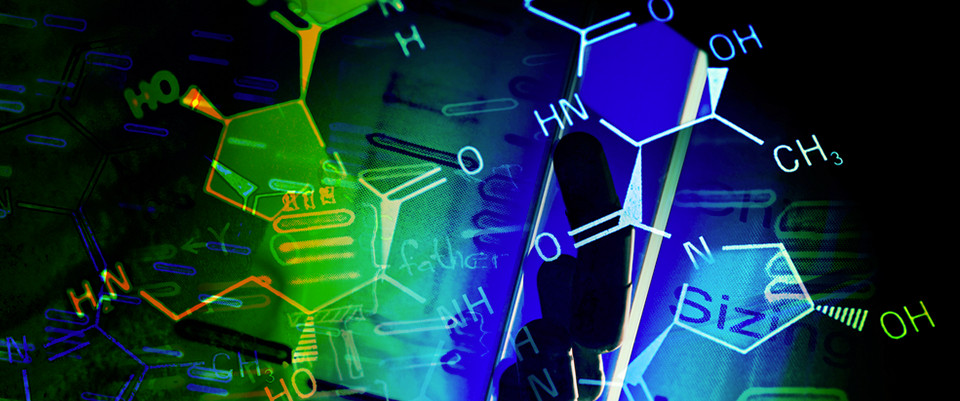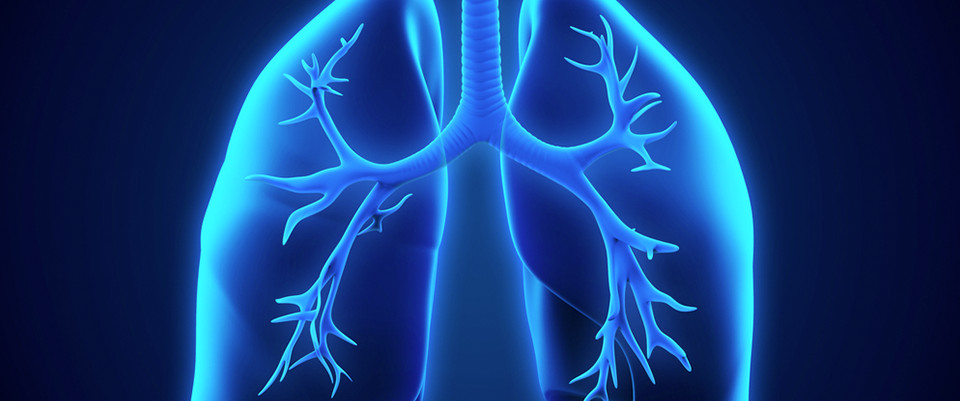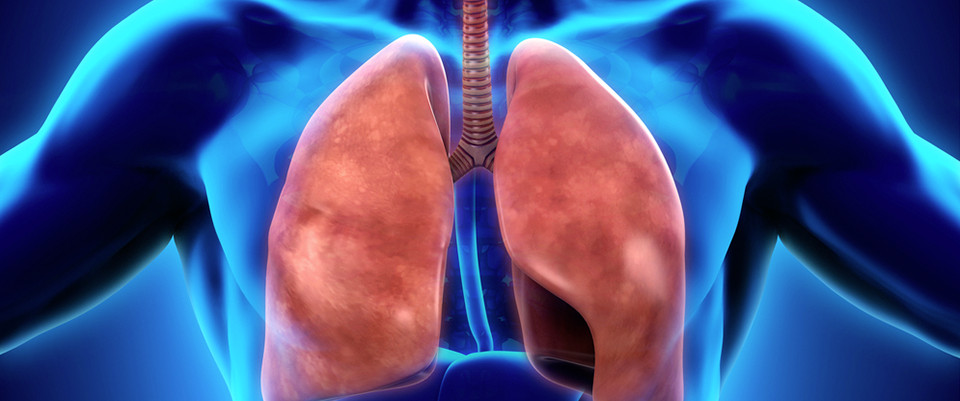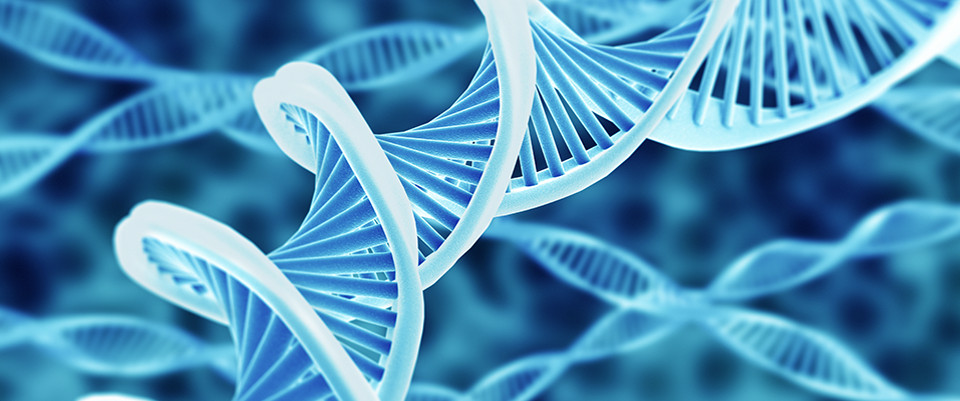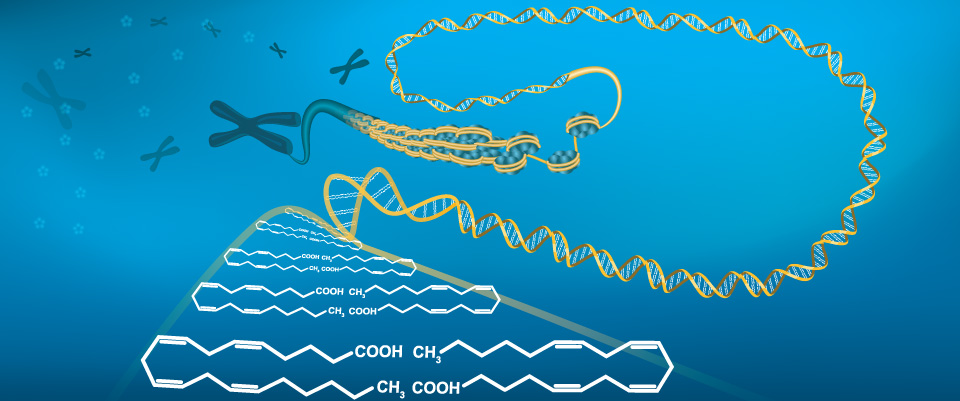PubMed
Genome-Wide Association Study on Immunoglobulin G Glycosylation Patterns.
Genome-Wide Association Study on Immunoglobulin G Glycosylation Patterns.
Front Immunol. 2018;9:277
Authors: Wahl A, van den Akker E, Klaric L, Štambuk J, Benedetti E, Plomp R, Razdorov G, Trbojević-Akmačić I, Deelen J, van Heemst D, Slagboom PE, Vučković F, Grallert H, Krumsiek J, Strauch K, Peters A, Meitinger T, Hayward C, Wuhrer M, Beekman M, Lauc G, Gieger C
Abstract
Immunoglobulin G (IgG), a glycoprotein secreted by plasma B-cells, plays a major role in the human adaptive immune response and are associated with a wide range of diseases. Glycosylation of the Fc binding region of IgGs, responsible for the antibody's effector function, is essential for prompting a proper immune response. This study focuses on the general genetic impact on IgG glycosylation as well as corresponding subclass specificities. To identify genetic loci involved in IgG glycosylation, we performed a genome-wide association study (GWAS) on liquid chromatography electrospray mass spectrometry (LC-ESI-MS)-measured IgG glycopeptides of 1,823 individuals in the Cooperative Health Research in the Augsburg Region (KORA F4) study cohort. In addition, we performed GWAS on subclass-specific ratios of IgG glycans to gain power in identifying genetic factors underlying single enzymatic steps in the glycosylation pathways. We replicated our findings in 1,836 individuals from the Leiden Longevity Study (LLS). We were able to show subclass-specific genetic influences on single IgG glycan structures. The replicated results indicate that, in addition to genes encoding for glycosyltransferases (i.e., ST6GAL1, B4GALT1, FUT8, and MGAT3), other genetic loci have strong influences on the IgG glycosylation patterns. A novel locus on chromosome 1, harboring RUNX3, which encodes for a transcription factor of the runt domain-containing family, is associated with decreased galactosylation. Interestingly, members of the RUNX family are cross-regulated, and RUNX3 is involved in both IgA class switching and B-cell maturation as well as T-cell differentiation and apoptosis. Besides the involvement of glycosyltransferases in IgG glycosylation, we suggest that, due to the impact of variants within RUNX3, potentially mechanisms involved in B-cell activation and T-cell differentiation during the immune response as well as cell migration and invasion involve IgG glycosylation.
PMID: 29535710 [PubMed]
Quality Variation of Goji (Fruits of Lycium spp.) in China: A Comparative Morphological and Metabolomic Analysis.
Quality Variation of Goji (Fruits of Lycium spp.) in China: A Comparative Morphological and Metabolomic Analysis.
Front Pharmacol. 2018;9:151
Authors: Yao R, Heinrich M, Zou Y, Reich E, Zhang X, Chen Y, Weckerle CS
Abstract
Goji (fruits of Lycium barbarum L. and L. chinense Mill.) has been used in China as food and medicine for millennia, and globally has been consumed increasingly as a healthy food. Ningxia, with a semi-arid climate, always had the reputation of producing best goji quality (daodi area). Recently, the increasing market demand pushed the cultivation into new regions with different climates. We therefore ask: How does goji quality differ among production areas of various climatic regions? Historical records are used to trace the spread of goji production in China over time. Quality measurements of 51 samples were correlated with the four main production areas in China: monsoon (Hebei), semi-arid (Ningxia, Gansu, and Inner Mongolia), plateau (Qinghai) and arid regions (Xinjiang). We include morphological characteristics, sugar and polysaccharide content, antioxidant activity, and metabolomic profiling to compare goji among climatic regions. Goji cultivation probably began in the East (Hebei) of China around 100 CE and later shifted westward to the semi-arid regions. Goji from monsoon, plateau and arid regions differ according to its fruit morphology, whereas semi-arid goji cannot be separated from the other regions. L. chinense fruits, which are exclusively cultivated in Hebei (monsoon), are significantly lighter, smaller and brighter in color, while the heaviest and largest fruits (L. barbarum) stem from the plateau. The metabolomic profiling separates the two species but not the regions of cultivation. Lycium chinense and samples from the semi-arid regions have significantly (p < 0.01) lower sugar contents and L. chinense shows the highest antioxidant activity. Our results do not justify superiority of a specific production area over other areas. Instead it will be essential to distinguish goji from different regions based on the specific morphological and chemical traits with the aim to understand what its intended uses are.
PMID: 29535631 [PubMed]
Comparative metabolism of tripolide and triptonide using metabolomics.
Comparative metabolism of tripolide and triptonide using metabolomics.
Food Chem Toxicol. 2018 Mar 10;:
Authors: Hu DD, Chen XL, Xiao XR, Wang YK, Liu F, Zhao Q, Li X, Yang XW, Li F
PMID: 29534979 [PubMed - as supplied by publisher]
Laboratory evolution reveals regulatory and metabolic trade-offs of glycerol utilization in Saccharomyces cerevisiae.
Laboratory evolution reveals regulatory and metabolic trade-offs of glycerol utilization in Saccharomyces cerevisiae.
Metab Eng. 2018 Mar 10;:
Authors: Strucko T, Zirngibl K, Pereira F, Kafkia E, Mohamed ET, Rettel M, Stein F, Feist AM, Jouhten P, Patil KR, Forster J
Abstract
Most microbial species, including model eukaryote Saccharomyces cerevisiae, possess genetic capability to utilize many alternative nutrient sources. Yet, it remains an open question whether these manifest into assimilatory phenotypes. Despite possessing all necessary pathways, S. cerevisiae grows poorly or not at all when glycerol is the sole carbon source. Here we discover, through multiple evolved lineages, genetic determinants underlying glycerol catabolism and the associated fitness trade-offs. Most evolved lineages adapted through mutations in the HOG pathway, but showed hampered osmotolerance. In the other lineages, we find that only three mutations cause the improved phenotype. One of these contributes counter-intuitively by decoupling the TCA cycle from oxidative phosphorylation, and thereby hampers ethanol utilization. Transcriptomics, proteomics and metabolomics analysis of the re-engineered strains affirmed the causality of the three mutations at molecular level. Introduction of these mutations resulted in improved glycerol utilization also in industrial strains. Our findings not only have a direct relevance for improving glycerol-based bioprocesses, but also illustrate how a metabolic pathway can remain unexploited due to fitness trade-offs in other, ecologically important, traits.
PMID: 29534903 [PubMed - as supplied by publisher]
Nanoparticle-Assisted Metabolomics.
Nanoparticle-Assisted Metabolomics.
Metabolites. 2018 Mar 13;8(1):
Authors: Zhang B, Xie M, Bruschweiler-Li L, Brüschweiler R
Abstract
Understanding and harnessing the interactions between nanoparticles and biological molecules is at the forefront of applications of nanotechnology to modern biology. Metabolomics has emerged as a prominent player in systems biology as a complement to genomics, transcriptomics and proteomics. Its focus is the systematic study of metabolite identities and concentration changes in living systems. Despite significant progress over the recent past, important challenges in metabolomics remain, such as the deconvolution of the spectra of complex mixtures with strong overlaps, the sensitive detection of metabolites at low abundance, unambiguous identification of known metabolites, structure determination of unknown metabolites and standardized sample preparation for quantitative comparisons. Recent research has demonstrated that some of these challenges can be substantially alleviated with the help of nanoscience. Nanoparticles in particular have found applications in various areas of bioanalytical chemistry and metabolomics. Their chemical surface properties and increased surface-to-volume ratio endows them with a broad range of binding affinities to biomacromolecules and metabolites. The specific interactions of nanoparticles with metabolites or biomacromolecules help, for example, simplify metabolomics spectra, improve the ionization efficiency for mass spectrometry or reveal relationships between spectral signals that belong to the same molecule. Lessons learned from nanoparticle-assisted metabolomics may also benefit other emerging areas, such as nanotoxicity and nanopharmaceutics.
PMID: 29533993 [PubMed]
Quantitation of the anticancer drug abiraterone and its metabolite Δ(4)-abiraterone in human plasma using high-resolution mass spectrometry.
Quantitation of the anticancer drug abiraterone and its metabolite Δ(4)-abiraterone in human plasma using high-resolution mass spectrometry.
J Pharm Biomed Anal. 2018 Mar 06;154:66-74
Authors: Bhatnagar A, McKay MJ, Crumbaker M, Ahire K, Karuso P, Gurney H, Molloy MP
Abstract
Abiraterone acetate is administered as a prodrug to patients with metastatic, castration-resistant prostate cancer (mCRPC) and is readily metabolized into the potent 17a-hydroxylase/17,20-lyase (CYP17) enzyme inhibitor and androgen receptor inhibitor abiraterone and Δ(4)-abiraterone (D4A), respectively. To investigate pharmacokinetic variability in abiraterone acetate metabolism we developed highly sensitive liquid chromatography/mass spectrometry (LC/MS) assays for the simultaneous quantitation of abiraterone and D4A in human plasma using high-resolution mass spectrometry (HRMS) on an Orbitrap mass spectrometer. This study demonstrates the quantitative performance of HRMS and compares the conventional Parallel Reaction Monitoring (PRM) mode of quantitation with the unconventional Full scan MS mode conducted at high resolution (>70,000 resolution). The use of HRMS for quantitation of abiraterone and D4A yielded assays that were linear over a broad concentration range (0.074-509.6 ng/mL for abiraterone; 0.075-59.93 ng/mL for D4A) in both Full scan MS and PRM modes. The assay precision for abiraterone and D4A was below 5% in PRM mode and 7% in Full scan MS mode. Accuracies fell within 98-107% for abiraterone and 104-112% for D4A in PRM mode, and 96-116% for abiraterone and 96-105% for D4A in Full scan MS mode, each meeting the acceptance criteria of FDA approved guidelines for bioanalytical methods The PRM analysis of abiraterone and D4A provided high specificity and reduced background interference, however the Full scan MS detection at a resolution of 70,000 was advantageous in that it required minimal optimization, was simple to implement, yielded comparable quantitative characteristics to PRM and the data is useful for re-analysis. Use of the assays were demonstrated for quantitation of these metabolites in steady state trough level plasma of seventeen (17) patients with mCRPC, demonstrating the inter-patient variability of up to 10-fold concentration.
PMID: 29533860 [PubMed - as supplied by publisher]
Morphology of glandular trichomes of Japanese catnip (Schizonepeta tenuifolia Briquet) and developmental dynamics of their secretory activity.
Morphology of glandular trichomes of Japanese catnip (Schizonepeta tenuifolia Briquet) and developmental dynamics of their secretory activity.
Phytochemistry. 2018 Mar 10;150:23-30
Authors: Liu C, Srividya N, Parrish AN, Yue W, Shan M, Wu Q, Lange BM
Abstract
Schizonepeta tenuifolia Briquet, commonly known as Japanese catnip, is used for the treatment of colds, headaches, fevers, and skin rashes in traditional Asian medicine (China, Japan and Korea). The volatile oil and its constituents have various demonstrated biological activities, but there is currently limited information regarding the site of biosynthesis. Light microscopy and scanning electron microscopy indicated the presence of three distinct glandular trichome types which, based on their morphological features, are referred to as peltate, capitate and digitiform glandular trichomes. Laser scanning microscopy and 3D reconstruction demonstrated that terpenoid-producing peltate glandular trichomes contain a disk of twelve secretory cells. The oil of peltate glandular trichomes, collected by laser microdissection or using custom-made micropipettes, was demonstrated to contain (-)-pulegone, (+)-menthone and (+)-limonene as major constituents. Digitiform and capitate glandular trichomes did not contain appreciable levels of terpenoid volatiles. The yield of distilled oil from spikes was significantly (44%) higher than that from leaves, while the composition of oils was very similar. Oils collected directly from leaf peltate glandular trichomes over the course of a growing season contained primarily (-)-pulegone (>80% at 32 days after germination) in young plants, while (+)-menthone began to accumulate later (>75% at 80 days after germination), at the expense of (-)-pulegone (the levels of (+)-limonene remained fairly stable at 3-5%). The current study establishes the morphological and chemical characteristics of glandular trichome types of S. tenuifolia, and also provides the basis for unraveling the biosynthesis of essential oil in this popular medicinal plant.
PMID: 29533838 [PubMed - as supplied by publisher]
Interrogation of Benzomalvin Biosynthesis using FAC-MS: Discovery of a Benzodiazepine Synthase Activity.
Interrogation of Benzomalvin Biosynthesis using FAC-MS: Discovery of a Benzodiazepine Synthase Activity.
Biochemistry. 2018 Mar 13;:
Authors: Clevenger KD, Ye R, Bok JW, Thomas PM, Islam MN, Miley GP, Robey M, Chen C, Yang K, Swyers M, Wu E, Gao P, Wu C, Keller NP, Kelleher NL
Abstract
The benzodiazepine benzomalvin A/D is a fungal-derived specialized metabolite and inhibitor of the substance P receptor NK1, biosynthesized by a three-gene non-ribosomal peptide synthetase cluster. Here, we utilize <u>f</u>ungal <u>a</u>rtificial <u>c</u>hromosomes with <u>m</u>etabolomic <u>s</u>coring (FAC-MS) to carry out molecular genetic pathway dissection and targeted metabolomics analysis to assign the in vivo role of each domain in the benzomalvin biosynthetic pathway. The use of FAC-MS identified the terminal cyclizing condensation domain as BenY-CT and the internal C-domains as BenZ-C1 and BenZ-C2. Unexpectedly, we also uncover evidence suggesting BenY-CT or a yet to be identified protein mediates benzodiazepine formation, representing the first reported benzodiazepine synthase enzymatic activity. This work informs understanding of what defines a fungal CT domain and shows how the FAC-MS platform can be used as a tool for in vivo analyses of specialized metabolite biosynthesis and for the discovery and dissection of new enzyme activities.
PMID: 29533658 [PubMed - as supplied by publisher]
Probing the application range and selectivity of a differential mobility spectrometry-mass spectrometry platform for metabolomics.
Probing the application range and selectivity of a differential mobility spectrometry-mass spectrometry platform for metabolomics.
Anal Bioanal Chem. 2018 Mar 12;:
Authors: Wernisch S, Afshinnia F, Rajendiran T, Pennathur S
Abstract
Metabolomics applications of differential mobility spectrometry (DMS)-mass spectrometry (MS) have largely concentrated on targeted assays and the removal of isobaric or chemical interferences from the signals of a small number of analytes. In the work reported here, we systematically investigated the application range of a DMS-MS method for metabolomics using more than 800 authentic metabolite standards as the test set. The coverage achieved with the DMS-MS platform was comparable to that achieved with chromatographic methods. High orthogonality was observed between hydrophilic interaction liquid chromatography and the 2-propanol-mediated DMS separation, and previously observed similarities were confirmed for the DMS platform and reversed-phase liquid chromatography. We describe the chemical selectivity observed for selected subsets of the metabolite test set, such as lipids, amino acids, nucleotides, and organic acids. Furthermore, we rationalize the behavior and separation of isomeric aromatic acids, bile acids, and other metabolites. Graphical abstract Differential mobility spectrometry-mass spectrometry (DMS-MS) facilitates rapid separation of metabolites of similar mass-to-charge ratio by distributing them across the compensation voltage range on the basis of their different molecular structures.
PMID: 29532192 [PubMed - as supplied by publisher]
Metabolic Heterogeneity Evidenced by MRS among Patient-Derived Glioblastoma Multiforme Stem-Like Cells Accounts for Cell Clustering and Different Responses to Drugs.
Metabolic Heterogeneity Evidenced by MRS among Patient-Derived Glioblastoma Multiforme Stem-Like Cells Accounts for Cell Clustering and Different Responses to Drugs.
Stem Cells Int. 2018;2018:3292704
Authors: Grande S, Palma A, Ricci-Vitiani L, Luciani AM, Buccarelli M, Biffoni M, Molinari A, Calcabrini A, D'Amore E, Guidoni L, Pallini R, Viti V, Rosi A
Abstract
Clustering of patient-derived glioma stem-like cells (GSCs) through unsupervised analysis of metabolites detected by magnetic resonance spectroscopy (MRS) evidenced three subgroups, namely clusters 1a and 1b, with high intergroup similarity and neural fingerprints, and cluster 2, with a metabolism typical of commercial tumor lines. In addition, subclones generated by the same GSC line showed different metabolic phenotypes. Aerobic glycolysis prevailed in cluster 2 cells as demonstrated by higher lactate production compared to cluster 1 cells. Oligomycin, a mitochondrial ATPase inhibitor, induced high lactate extrusion only in cluster 1 cells, where it produced neutral lipid accumulation detected as mobile lipid signals by MRS and lipid droplets by confocal microscopy. These results indicate a relevant role of mitochondrial fatty acid oxidation for energy production in GSCs. On the other hand, further metabolic differences, likely accounting for different therapy responsiveness observed after etomoxir treatment, suggest that caution must be used in considering patient treatment with mitochondria FAO blockers. Metabolomics and metabolic profiling may contribute to discover new diagnostic or prognostic biomarkers to be used for personalized therapies.
PMID: 29531533 [PubMed]
CoA synthase regulates mitotic fidelity via CBP-mediated acetylation.
CoA synthase regulates mitotic fidelity via CBP-mediated acetylation.
Nat Commun. 2018 Mar 12;9(1):1039
Authors: Lin CC, Kitagawa M, Tang X, Hou MH, Wu J, Qu DC, Srinivas V, Liu X, Thompson JW, Mathey-Prevot B, Yao TP, Lee SH, Chi JT
Abstract
The temporal activation of kinases and timely ubiquitin-mediated degradation is central to faithful mitosis. Here we present evidence that acetylation controlled by Coenzyme A synthase (COASY) and acetyltransferase CBP constitutes a novel mechanism that ensures faithful mitosis. We found that COASY knockdown triggers prolonged mitosis and multinucleation. Acetylome analysis reveals that COASY inactivation leads to hyper-acetylation of proteins associated with mitosis, including CBP and an Aurora A kinase activator, TPX2. During early mitosis, a transient CBP-mediated TPX2 acetylation is associated with TPX2 accumulation and Aurora A activation. The recruitment of COASY inhibits CBP-mediated TPX2 acetylation, promoting TPX2 degradation for mitotic exit. Consistently, we detected a stage-specific COASY-CBP-TPX2 association during mitosis. Remarkably, pharmacological and genetic inactivation of CBP effectively rescued the mitotic defects caused by COASY knockdown. Together, our findings uncover a novel mitotic regulation wherein COASY and CBP coordinate an acetylation network to enforce productive mitosis.
PMID: 29531224 [PubMed - in process]
The dilemma of diagnosing coenzyme Q10 deficiency in muscle.
The dilemma of diagnosing coenzyme Q10 deficiency in muscle.
Mol Genet Metab. 2018 Feb 23;:
Authors: Louw R, Smuts I, Wilsenach KL, Jonck LM, Schoonen M, van der Westhuizen FH
Abstract
BACKGROUND: Coenzyme Q10 (CoQ10) is an important component of the mitochondrial respiratory chain (RC) and is critical for energy production. Although the prevalence of CoQ10 deficiency is still unknown, the general consensus is that the condition is under-diagnosed. The aim of this study was to retrospectively investigate CoQ10 deficiency in frozen muscle specimens in a cohort of ethnically diverse patients who received muscle biopsies for the investigation of a possible RC deficiency (RCD).
METHODS: Muscle samples were homogenized whereby 600 ×g supernatants were used to analyze RC enzyme activities, followed by quantification of CoQ10 by stable isotope dilution liquid chromatography tandem mass spectrometry. The experimental group consisted of 156 patients of which 76 had enzymatically confirmed RCDs. To further assist in the diagnosis of CoQ10 deficiency in this cohort, we included sequencing of 18 selected nuclear genes involved with CoQ10 biogenesis in 26 patients with low CoQ10 concentration in muscle samples.
RESULTS: Central 95% reference intervals (RI) were established for CoQ10 normalized to citrate synthase (CS) or protein. Nine patients were considered CoQ10 deficient when expressed against CS, while 12 were considered deficient when expressed against protein. In two of these patients the molecular genetic cause could be confirmed, of which one would not have been identified as CoQ10 deficient if expressed only against protein content.
CONCLUSION: In this retrospective study, we report a central 95% reference interval for 600 ×g muscle supernatants prepared from frozen samples. The study reiterates the importance of including CoQ10 quantification as part of a diagnostic approach to study mitochondrial disease as it may complement respiratory chain enzyme assays with the possible identification of patients that may benefit from CoQ10 supplementation. However, the anomaly that only a few patients were identified as CoQ10 deficient against both markers (CS and protein), while the majority of patients where only CoQ10 deficient against one of the markers (and not the other), remains problematic. We therefore conclude from our data that, to prevent possibly not diagnosing a potential CoQ10 deficiency, the expression of CoQ10 levels in muscle on both CS as well as protein content should be considered.
PMID: 29530532 [PubMed - as supplied by publisher]
Exosomal αvβ6 integrin is required for monocyte M2 polarization in prostate cancer.
Exosomal αvβ6 integrin is required for monocyte M2 polarization in prostate cancer.
Matrix Biol. 2018 Mar 09;:
Authors: Lu H, Bowler N, Harshyne LA, Craig Hooper D, Krishn SR, Kurtoglu S, Fedele C, Liu Q, Tang HY, Kossenkov AV, Kelly WK, Wang K, Kean RB, Weinreb PH, Yu L, Dutta A, Fortina P, Ertel A, Stanczak M, Forsberg F, Gabrilovich DI, Speicher DW, Altieri DC, Languino LR
Abstract
Therapeutic approaches aimed at curing prostate cancer are only partially successful given the occurrence of highly metastatic resistant phenotypes that frequently develop in response to therapies. Recently, we have described αvβ6, a surface receptor of the integrin family as a novel therapeutic target for prostate cancer; this epithelial-specific molecule is an ideal target since, unlike other integrins, it is found in different types of cancer but not in normal tissues. We describe a novel αvβ6-mediated signaling pathway that has profound effects on the microenvironment. We show that αvβ6 is transferred from cancer cells to monocytes, including β6-/- monocytes, by exosomes and that monocytes from prostate cancer patients, but not from healthy volunteers, express αvβ6. Cancer cell exosomes, purified via density gradients, promote M2 polarization, whereas αvβ6 down-regulation in exosomes inhibits M2 polarization in recipient monocytes. Also, as evaluated by our proteomic analysis, αvβ6 down-regulation causes a significant increase in donor cancer cells, and their exosomes, of two molecules that have a tumor suppressive role, STAT1 and MX1/2. Finally, using the Ptenpc-/- prostate cancer mouse model, which carries a prostate epithelial-specific Pten deletion, we demonstrate that αvβ6 inhibition in vivo causes up-regulation of STAT1 in cancer cells. Our results provide evidence of a novel mechanism that regulates M2 polarization and prostate cancer progression through transfer of αvβ6 from cancer cells to monocytes through exosomes.
PMID: 29530483 [PubMed - as supplied by publisher]
MassImager: A software for interactive and in-depth analysis of mass spectrometry imaging data.
MassImager: A software for interactive and in-depth analysis of mass spectrometry imaging data.
Anal Chim Acta. 2018 Jul 26;1015:50-57
Authors: He J, Huang L, Tian R, Li T, Sun C, Song X, Lv Y, Luo Z, Li X, Abliz Z
Abstract
Mass spectrometry imaging (MSI) has become a powerful tool to probe molecule events in biological tissue. However, it is a widely held viewpoint that one of the biggest challenges is an easy-to-use data processing software for discovering the underlying biological information from complicated and huge MSI dataset. Here, a user-friendly and full-featured MSI software including three subsystems, Solution, Visualization and Intelligence, named MassImager, is developed focusing on interactive visualization, in-situ biomarker discovery and artificial intelligent pathological diagnosis. Simplified data preprocessing and high-throughput MSI data exchange, serialization jointly guarantee the quick reconstruction of ion image and rapid analysis of dozens of gigabytes datasets. It also offers diverse self-defined operations for visual processing, including multiple ion visualization, multiple channel superposition, image normalization, visual resolution enhancement and image filter. Regions-of-interest analysis can be performed precisely through the interactive visualization between the ion images and mass spectra, also the overlaid optical image guide, to directly find out the region-specific biomarkers. Moreover, automatic pattern recognition can be achieved immediately upon the supervised or unsupervised multivariate statistical modeling. Clear discrimination between cancer tissue and adjacent tissue within a MSI dataset can be seen in the generated pattern image, which shows great potential in visually in-situ biomarker discovery and artificial intelligent pathological diagnosis of cancer. All the features are integrated together in MassImager to provide a deep MSI processing solution at the in-situ metabolomics level for biomarker discovery and future clinical pathological diagnosis.
PMID: 29530251 [PubMed - in process]
Serum proton NMR metabolomics analysis of human lung cancer following microwave ablation.
Serum proton NMR metabolomics analysis of human lung cancer following microwave ablation.
Radiat Oncol. 2018 Mar 12;13(1):40
Authors: Hu JM, Sun HT
Abstract
BACKGROUND: To find potential serum biomarkers of microwave ablation (MWA) for treatment of human lung cancer by 1H nuclear magnetic resonance (NMR)-based metabolomics analysis.
METHODS: Serum specimens collected from 43 healthy individuals, 39 patients with advanced non-small cell lung cancer (NSCLC) and 38 NSCLC patients treated with MWA, were subjected to 1H NMR-based metabolomics analysis. Partial least squares discriminant analysis was used to analyze the data.
RESULTS: Compared with healthy controls, NSCLC patients showed significantly elevated serum levels of lactate, alanine, glutamate, proline, glycoprotein, phenylalanine, tyrosine and tryptophan, and markedly decreased serum levels of glucose, taurine, glutamine, glycine, phosphocreatine and threonine (p < 0.05). MWA treatment reversed the metabolic profiles of NSCLC patients towards the control group.
CONCLUSIONS: 1H NMR-based metabolomics analysis enhanced the current understanding of the mechanisms involved in NSCLC, and uncovered the therapeutic potential of MWA for treatment of NSCLC. The above disturbed serum metabolites were proposed to be the potential biomarkers that may help to predict NSCLC and to evaluate the efficacy of MWA in the treatment of NSCLC.
PMID: 29530051 [PubMed - in process]
Novel Plasmodium falciparum metabolic network reconstruction identifies shifts associated with clinical antimalarial resistance.
Related Articles
Novel Plasmodium falciparum metabolic network reconstruction identifies shifts associated with clinical antimalarial resistance.
BMC Genomics. 2017 Jul 19;18(1):543
Authors: Carey MA, Papin JA, Guler JL
Abstract
BACKGROUND: Malaria remains a major public health burden and resistance has emerged to every antimalarial on the market, including the frontline drug, artemisinin. Our limited understanding of Plasmodium biology hinders the elucidation of resistance mechanisms. In this regard, systems biology approaches can facilitate the integration of existing experimental knowledge and further understanding of these mechanisms.
RESULTS: Here, we developed a novel genome-scale metabolic network reconstruction, iPfal17, of the asexual blood-stage P. falciparum parasite to expand our understanding of metabolic changes that support resistance. We identified 11 metabolic tasks to evaluate iPfal17 performance. Flux balance analysis and simulation of gene knockouts and enzyme inhibition predict candidate drug targets unique to resistant parasites. Moreover, integration of clinical parasite transcriptomes into the iPfal17 reconstruction reveals patterns associated with antimalarial resistance. These results predict that artemisinin sensitive and resistant parasites differentially utilize scavenging and biosynthetic pathways for multiple essential metabolites, including folate and polyamines. Our findings are consistent with experimental literature, while generating novel hypotheses about artemisinin resistance and parasite biology. We detect evidence that resistant parasites maintain greater metabolic flexibility, perhaps representing an incomplete transition to the metabolic state most appropriate for nutrient-rich blood.
CONCLUSION: Using this systems biology approach, we identify metabolic shifts that arise with or in support of the resistant phenotype. This perspective allows us to more productively analyze and interpret clinical expression data for the identification of candidate drug targets for the treatment of resistant parasites.
PMID: 28724354 [PubMed - indexed for MEDLINE]
Spatially resolved metabolic distribution for unraveling the physiological change and responses in tomato fruit using matrix-assisted laser desorption/ionization-mass spectrometry imaging (MALDI-MSI).
Related Articles
Spatially resolved metabolic distribution for unraveling the physiological change and responses in tomato fruit using matrix-assisted laser desorption/ionization-mass spectrometry imaging (MALDI-MSI).
Anal Bioanal Chem. 2017 Feb;409(6):1697-1706
Authors: Nakamura J, Morikawa-Ichinose T, Fujimura Y, Hayakawa E, Takahashi K, Ishii T, Miura D, Wariishi H
Abstract
Information on spatiotemporal metabolic behavior is indispensable for a precise understanding of physiological changes and responses, including those of ripening processes and wounding stress, in fruit, but such information is still limited. Here, we visualized the spatial distribution of metabolites within tissue sections of tomato (Solanum lycopersicum L.) fruit using a matrix-assisted laser desorption/ionization-mass spectrometry imaging (MALDI-MSI) technique combined with a matrix sublimation/recrystallization method. This technique elucidated the unique distribution patterns of more than 30 metabolite-derived ions, including primary and secondary metabolites, simultaneously. To investigate spatiotemporal metabolic alterations during physiological changes at the whole-tissue level, MALDI-MSI was performed using the different ripening phenotypes of mature green and mature red tomato fruits. Although apparent alterations in the localization and intensity of many detected metabolites were not observed between the two tomatoes, the amounts of glutamate and adenosine monophosphate, umami compounds, increased in both mesocarp and locule regions during the ripening process. In contrast, malate, a sour compound, decreased in both regions. MALDI-MSI was also applied to evaluate more local metabolic responses to wounding stress. Accumulations of a glycoalkaloid, tomatine, and a low level of its glycosylated metabolite, esculeoside A, were found in the wound region where cell death had been induced. Their inverse levels were observed in non-wounded regions. Furthermore, the amounts of both compounds differed in the developmental stages. Thus, our MALDI-MSI technique increased the understanding of the physiological changes and responses of tomato fruit through the determination of spatiotemporally resolved metabolic alterations. Graphical abstract ᅟ.
PMID: 27933363 [PubMed - indexed for MEDLINE]
Metabolic profiling of ob/ob mouse fatty liver using HR-MAS 1H-NMR combined with gene expression analysis reveals alterations in betaine metabolism and the transsulfuration pathway.
Related Articles
Metabolic profiling of ob/ob mouse fatty liver using HR-MAS 1H-NMR combined with gene expression analysis reveals alterations in betaine metabolism and the transsulfuration pathway.
Anal Bioanal Chem. 2017 Feb;409(6):1591-1606
Authors: Gogiashvili M, Edlund K, Gianmoena K, Marchan R, Brik A, Andersson JT, Lambert J, Madjar K, Hellwig B, Rahnenführer J, Hengstler JG, Hergenröder R, Cadenas C
Abstract
Metabolic perturbations resulting from excessive hepatic fat accumulation are poorly understood. Thus, in this study, leptin-deficient ob/ob mice, a mouse model of fatty liver disease, were used to investigate metabolic alterations in more detail. Metabolites were quantified in intact liver tissues of ob/ob (n = 8) and control (n = 8) mice using high-resolution magic angle spinning (HR-MAS) 1H-NMR. In addition, after demonstrating that HR-MAS 1H-NMR does not affect RNA integrity, transcriptional changes were measured by quantitative real-time PCR on RNA extracted from the same specimens after HR-MAS 1H-NMR measurements. Importantly, the gene expression changes obtained agreed with those observed by Affymetrix microarray analysis performed on RNA isolated directly from fresh-frozen tissue. In total, 40 metabolites could be assigned in the spectra and subsequently quantified. Quantification of lactate was also possible after applying a lactate-editing pulse sequence that suppresses the lipid signal, which superimposes the lactate methyl resonance at 1.3 ppm. Significant differences were detected for creatinine, glutamate, glycine, glycolate, trimethylamine-N-oxide, dimethylglycine, ADP, AMP, betaine, phenylalanine, and uridine. Furthermore, alterations in one-carbon metabolism, supported by both metabolic and transcriptional changes, were observed. These included reduced demethylation of betaine to dimethylglycine and the reduced expression of genes coding for transsulfuration pathway enzymes, which appears to preserve methionine levels, but may limit glutathione synthesis. Overall, the combined approach is advantageous as it identifies changes not only at the single gene or metabolite level but also deregulated pathways, thus providing critical insight into changes accompanying fatty liver disease. Graphical abstract A Evaluation of RNA integrity before and after HR-MAS 1H-NMR of intact mouse liver tissue. B Metabolite concentrations and gene expression levels assessed in ob/ob (steatotic) and ob/+ (control) mice using HR-MAS 1H-NMR and qRT-PCR, respectively.
PMID: 27896396 [PubMed - indexed for MEDLINE]
metabolomics; +22 new citations
22 new pubmed citations were retrieved for your search.
Click on the search hyperlink below to display the complete search results:
metabolomics
These pubmed results were generated on 2018/03/13PubMed comprises more than millions of citations for biomedical literature from MEDLINE, life science journals, and online books.
Citations may include links to full-text content from PubMed Central and publisher web sites.
Metabolomics and its physiological regulation process reveal the salt-tolerant mechanism in Glycine soja seedling roots.
Metabolomics and its physiological regulation process reveal the salt-tolerant mechanism in Glycine soja seedling roots.
Plant Physiol Biochem. 2018 Mar 05;126:187-196
Authors: Jiao Y, Bai Z, Xu J, Zhao M, Khan Y, Hu Y, Shi L
Abstract
Wild soybean (Glycine soja) is an excellent germplasm resource and has strong resistance and wide adaptability to different environments. Hence, the physiology and metabolomics characteristics of wild soybean under different types of salt stress were determined to improve understanding of salt-tolerant mechanisms of wild soybean in the field. Two types of wild soybean seedlings were exposed to two different types of salt stress for 14 d. The photosynthesis of wild soybean seedling extracts were analyzed using metabolomics based on gas chromatography-mass spectrometry. The wild soybean root extracts used metabolomics to quantify the metabolic changes and ion contents. The assimilative function of photosynthesis in salt-tolerant wild soybean was less inhibited than in common wild soybean, and it regulated accumulation of toxic ions and maintained the accumulation of K+ and Mg2+ to alleviate salt stress. Moreover, in resisting salt stress the salt-tolerant wild soybean has showed improved amino acid and carbohydrate and polyol metabolisms under neutral-salt stress and organic acid, amino acid and tricarboxylic acid metabolisms under alkali-salt stress. Our results provide valuable insights into the response of salt-tolerant wild soybean to two types of salt stress by linking stress-related physiological responses to changes in metabolites.
PMID: 29525442 [PubMed - as supplied by publisher]

